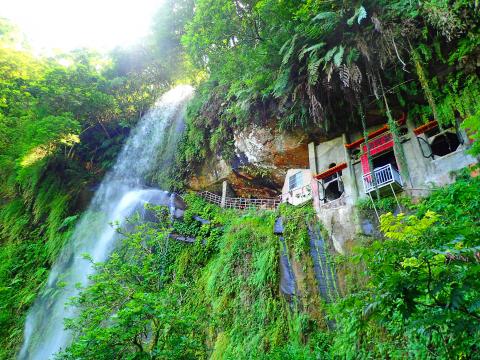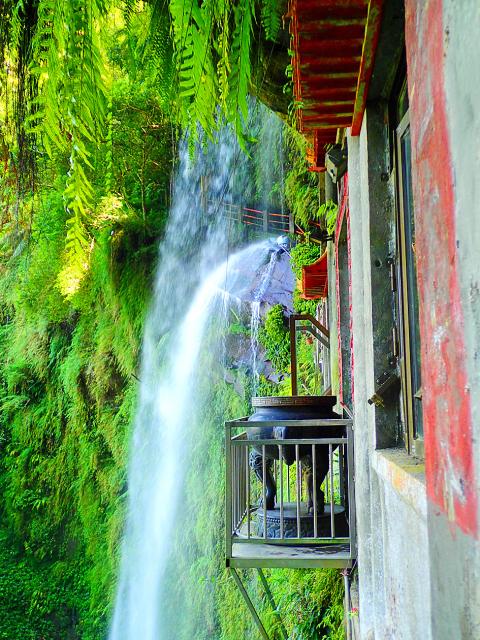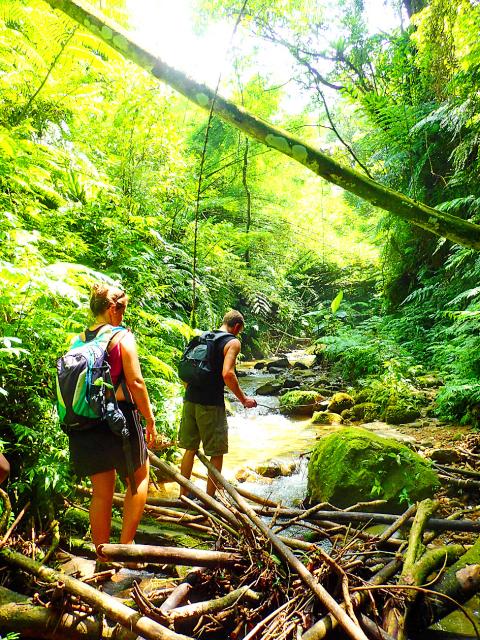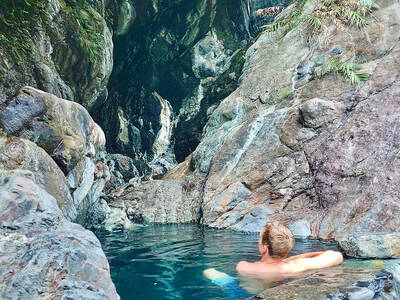Back in the mid-1990s, long before the Internet made us all lazy by giving instant access to information (and of course photos) on almost anywhere and anything we could possibly be interested in, the only way to find out about the wonders of Taiwan was through books.
English-language publications covering the country (apart from Lonely Planet Taiwan, which then, as now, barely skimmed the surface) were non-existent. Even tourist literature about anything more obscure than Alishan (阿里山) and Sun Moon Lake (日月潭) was rare as hen’s teeth. So, discovering a series of very detailed Chinese-language guides in the mid 1990s that covered Taiwan in a series of six thick tomes suddenly offered a glimpse of previously unknown riches. At the same time, it doubled as a huge impetus to improve my Chinese language skills.
Distant descendants of those wonderful old books can still be found in local bookshops today in the form of a series of 17 rather slimmer volumes, each covering one or two of Taiwan’s 22 counties. It’s a sign of the times, however, that while those original 1990s books were mostly text, with black-and-white photos and very basic (and often very wrong) hand-drawn maps, today’s product is full color, photo-heavy but lacking in detail — although it does come with the best generally available maps that I’ve found to date. These books are easily found in the travel section of most local Chinese-language bookshops — look for the books with the sunshine yellow spines printed with chunky white and orange characters.

Photo: Richard Saunders
TEMPLE IN A CLIFF
The first volume in that old, dog-eared, series of black-and-white books that I treasure to this day covered the area around Taipei, and introduces many fascinating places, several of which are now almost forgotten. One of those, Silver Stream Cave (銀河洞), is pretty well-known these days, but was rarely visited in the 90s, when the trail was less well maintained. When I first read the description, I was sure my shaky Chinese skills had got it wrong. The blurb described the place as a crack in a tall cliff over which poured a high waterfall, with a small temple built into the cracks in the cliff behind the cataract.
My interest thoroughly aroused, I boarded a bus to Xindian (there was no MRT in those days) at the first available opportunity, and followed the vague lines of the hand-drawn sketch map in the book. In my attempt to find this curiosity that sounded so fascinating on paper, I thrust the characters for “Silver Stream Cave” at any locals I could find to ask for directions.

Photo: Richard Saunders
And yes, when I finally stood inside the cave, looking out through the veil of falling water, I found my translation of the hieroglyphics in the book wasn’t so far out. Silver Stream Cave is perhaps the most unusual and arresting natural and cultural curiosity in the immediate vicinity of Taipei city. The bare, unpainted concrete and shiny bathroom tiles of the temple make it anything but beautiful in itself, but its unlikely location makes it a fascinating and unique place.
The cave is now an easy and quick escape from the city, thanks to the MRT and a frequent bus service. From the last bus stop, at Zhongsheng Bridge (中生橋頭站), follow the main road (Highway No. 9) beside a small river for about 10 minutes, and at the hairpin bend, continue straight ahead along a narrow lane, uphill, for another kilometer. Finally, a signpost on the right marks the trailhead, and a path of almost 500 steps climbing beside the cascading stream. In less than 10 minutes the waterfall and the little temple behind come into view above.
A final flight of stone steps climbs to the front door of the temple, passing a viewing platform right beside the tall waterfall (which is definitely best seen after heavy rain — it’s underwhelming in dry weather). Walk through the temple (a series of cramped chambers with the natural rock of the cleft for a back wall) and at the end a path continues to follow the long natural overhang in the sheer cliff, passing behind the waterfall and finishing at a small natural cave with a large statue of Lu Dongbin (呂洞賓), one of the Eight Immortals (八仙) of the Taoist faith.

Photo: Richard Saunders
Lu Dongbin is the most famous god worshiped at nearby Zhinan Temple (指南宮), one of Taipei’s biggest and most popular places of worship, high in the hills above Muzha, and reachable by a fine walk over the hills from Silver Stream Cave.
ON TO MAOKONG
Take the path on the right just below the temple, pass some rather basic toilets and climb stiffly to the top of the waterfall, where the trail rejoins the stream. In about five minutes the path crosses the little brook by a bridge. Ignore this, and bear right on a dirt trail up a steep bank, still following the right bank of the stream through thick forest. Shortly the trail crosses the stream three times in quick succession (there are no bridges, but it’s easy to cross dry-shod unless the stream is running unusually high), and then climb, at first gently, then later more steeply, through the jungle to the top of the ridge.
There’s a rather abrupt return to civilization at the top of the ridge, in the form of a large wooden resting platform. Follow the stone steps down the far side of the ridge, first through thick forest, then through tea fields and the path emerges after about 20 minutes into Muzha’s famous Maokong (貓空) area, right opposite the upper station of the Maokong Gondola (貓空纜車).
A ride on the cable car is a great way to end the hike, but before riding it to the next stop (for a look at Zhinan Temple), or all the way down to Muzha MRT station, be sure to join everyone else in Maokong’s most famous activity: sipping a cup of pouchong tea (包種茶) in one of the many tea houses spread out along the road near the Gondola terminus.
Richard Saunders is a classical pianist and writer who has lived in Taiwan since 1993. He’s the founder of a local hiking group, Taipei Hikers, and is the author of six books about Taiwan, including Taiwan 101 and Taipei Escapes. Visit his Web site at www.taiwanoffthebeatentrack.com.

Exceptions to the rule are sometimes revealing. For a brief few years, there was an emerging ideological split between the Democratic Progressive Party (DPP) and Chinese Nationalist Party (KMT) that appeared to be pushing the DPP in a direction that would be considered more liberal, and the KMT more conservative. In the previous column, “The KMT-DPP’s bureaucrat-led developmental state” (Dec. 11, page 12), we examined how Taiwan’s democratic system developed, and how both the two main parties largely accepted a similar consensus on how Taiwan should be run domestically and did not split along the left-right lines more familiar in

As I finally slid into the warm embrace of the hot, clifftop pool, it was a serene moment of reflection. The sound of the river reflected off the cave walls, the white of our camping lights reflected off the dark, shimmering surface of the water, and I reflected on how fortunate I was to be here. After all, the beautiful walk through narrow canyons that had brought us here had been inaccessible for five years — and will be again soon. The day had started at the Huisun Forest Area (惠蓀林場), at the end of Nantou County Route 80, north and east

Specialty sandwiches loaded with the contents of an entire charcuterie board, overflowing with sauces, creams and all manner of creative add-ons, is perhaps one of the biggest global food trends of this year. From London to New York, lines form down the block for mortadella, burrata, pistachio and more stuffed between slices of fresh sourdough, rye or focaccia. To try the trend in Taipei, Munchies Mafia is for sure the spot — could this be the best sandwich in town? Carlos from Spain and Sergio from Mexico opened this spot just seven months ago. The two met working in the

This month the government ordered a one-year block of Xiaohongshu (小紅書) or Rednote, a Chinese social media platform with more than 3 million users in Taiwan. The government pointed to widespread fraud activity on the platform, along with cybersecurity failures. Officials said that they had reached out to the company and asked it to change. However, they received no response. The pro-China parties, the Chinese Nationalist Party (KMT) and Taiwan People’s Party (TPP), immediately swung into action, denouncing the ban as an attack on free speech. This “free speech” claim was then echoed by the People’s Republic of China (PRC),